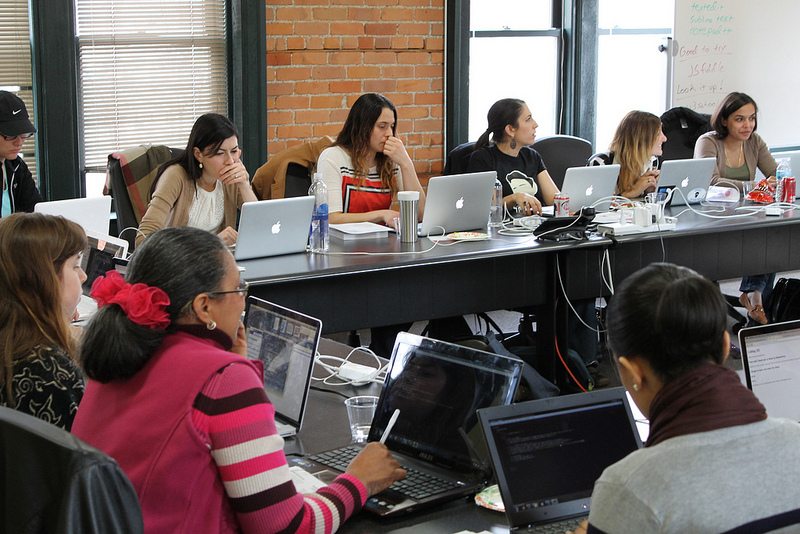OPINION
By Jerry Large
The Seattle Times.
Seeing women as full people is kind of a new thing, I mean it must be, because we continue to have trouble making that leap. And when I say we, I don’t just mean men, I mean women, too.
The persistence of domestic violence, pay gaps, and exploitive or dismissive media portrayals suggest we have a problem that is so pervasive as to seem almost normal and therefore invisible.
There are statistics, but too often they are waved off as primarily problems with women rather than indications of something societal, so that solutions begin with, “If women would only” … be assertive like men, dress differently, take more math classes, pay less attention to children. …
And you know, sometimes those prescriptions work for some women in some circumstances. But those adaptations never get to the heart of the systemic problem, and, really, how many people believe there is a systemic problem?
Last year, a study said Seattle’s gender pay gap was the worst in the nation among major metro areas. A year later, census figures show us being fifth, with women earning 78 cents for each dollar men earn.
The gap isn’t new, and neither were many of the online responses to stories about the data, mostly advice that women go for the same jobs as men.
There are at least a couple of problems with that. One is that it doesn’t ask why we decide which jobs have what value. Women tend to be overrepresented in some fields that I would argue are undervalued considering their contribution to society, such as child care and early education.
Women comprise nearly two-thirds of minimum-wage workers nationally and 57 percent in Seattle. Raising the minimum wage is in part a gender-equity issue.
If all those women could get the education or training needed for higher-paying jobs they’d face the second problem, which is that even in the same jobs men usually are paid more. (Family-friendly work policies might eliminate much of that gap.)
And, in many higher-paying fields, getting in the door isn’t as easy for women as for men.
One of the theories about why Seattle lags behind other cities in pay equity is that there are so many high-tech companies here, and they tend to have heavily male workforces.
Studies have shown that the people doing the hiring tend to favor men over women even if they have the same qualifications, and sometimes when women have more qualifications. Even women usually choose men over other women.
Of course, a woman has to get to the point of getting those qualifications, which means overcoming bias against girls in math and sciences in high school and college.
All of that adds up to a problem that is not about a jerk here or an unqualified woman there. The problem runs through our society. It is in our culture, in how we view the capabilities and tendencies of men and women. We see them as more different than they are, and we believe the differences are definitive.
Not only do we imagine two very different kinds of human beings, we value one more than the other. In fact, the presumed differences justify male primacy and devalue women, not just in the workplace but in every space.
Why did Ray Rice, the pro football player, think it was OK to beat his fiancée? Well, some said it’s because he’s a monster, a bad individual and not necessarily a product of a society in which domestic violence is a constant threat to women. He isn’t the only monster.
His team and the National Football League had to be shamed into taking action against him.
We’ve had periodic reports of high levels of spousal abuse in the military, in police officers’ households, on college campuses.
It happens with great frequency on Indian reservations and in poor neighborhoods, but those are less in the public eye.
Why do we pay attention for a moment, as in the Rice case, then go about our business?
Isn’t it curious how often entertainment, whether TV shows, movies or video games revolve around some violent act against women?
We can turn to the news for balance, but who’s telling the story there? Last year, the Women’s Media Center counted newspaper bylines, TV anchors and found an imbalance, 63 percent men, 36 percent women.
Maybe we’re not seeing the world as clearly as we could. If we did, we would see that people are not entirely defined by their reproductive parts. Maybe we could separate real differences from imagined ones that stand in the way of equality.














































































































































































































































































































































































